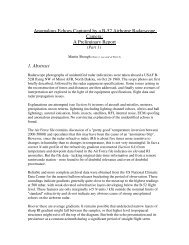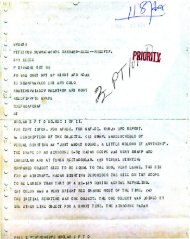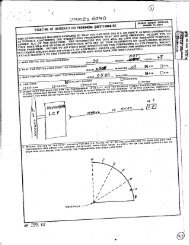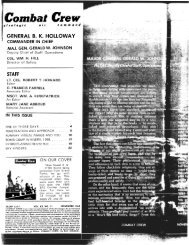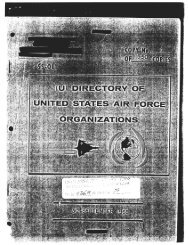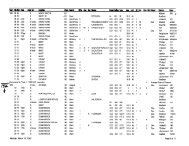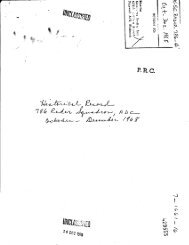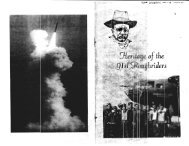TACTICAL AIR NAVIGATION (TACAN) - GlobalSecurity.org
TACTICAL AIR NAVIGATION (TACAN) - GlobalSecurity.org
TACTICAL AIR NAVIGATION (TACAN) - GlobalSecurity.org
You also want an ePaper? Increase the reach of your titles
YUMPU automatically turns print PDFs into web optimized ePapers that Google loves.
Figure 2-6.—<strong>TACAN</strong> modulation envelope<br />
spacing are a characteristic of that particular <strong>TACAN</strong><br />
signal element. However, it is important to understand<br />
that proper spacing between pulses and pulse pairs is<br />
what actually provides the aircraft with the means to<br />
distinguish between the <strong>TACAN</strong> pulses and any other<br />
pulses that might be present on the received radio<br />
frequency. Check the reference data in the appropriate<br />
technical manual for specific pulse characteristics and<br />
spacing.<br />
<strong>TACAN</strong> EQUIPMENT<br />
Many different types of <strong>TACAN</strong> equipment have<br />
been used for air navigation. Today, the AN/URN-25<br />
is taking over the task of tactical air navigation from<br />
the older AN/URN-20 on new construction ships and<br />
as ships complete overhaul. Two types of antennas<br />
are used with the AN/URN-25. They are the OE-<br />
273(V)/URN, used primarily in shipboard installations,<br />
and the OE-258/URN, which is used primarily ashore.<br />
Because both antenna systems are similar in theory of<br />
operation, we will discuss only the OE-273/URN. In<br />
the following paragraphs, we will discuss the<br />
AN/URN-25 and the antenna group 0E-273(V)/URN,<br />
and then we will briefly discuss the AN/URN-20.<br />
<strong>TACAN</strong> SET AN/URN-25<br />
The AN/URN-25 <strong>TACAN</strong> is used as a groundbased<br />
or shipborne beacon transponder to provide<br />
range and bearing information to aircraft equipped<br />
with <strong>TACAN</strong> equipment. It consists of two major<br />
units: the Transponder Group OX-52/URN-25,<br />
commonly referred to as unit 1, and the Control-<br />
Indicator C-10363/URN-25, commonly referred to as<br />
unit 2. These units are shown in figure 2-7. Each<br />
transponder is housed in a cabinet with two vertical<br />
drawers, one containing a coder keyer and the other<br />
containing a receiver-transmitter.<br />
The control-indicator displays the status of the<br />
transponder(s) and failure alarms, and allows limited<br />
control of the transponder(s) from a remote location.<br />
2-5



